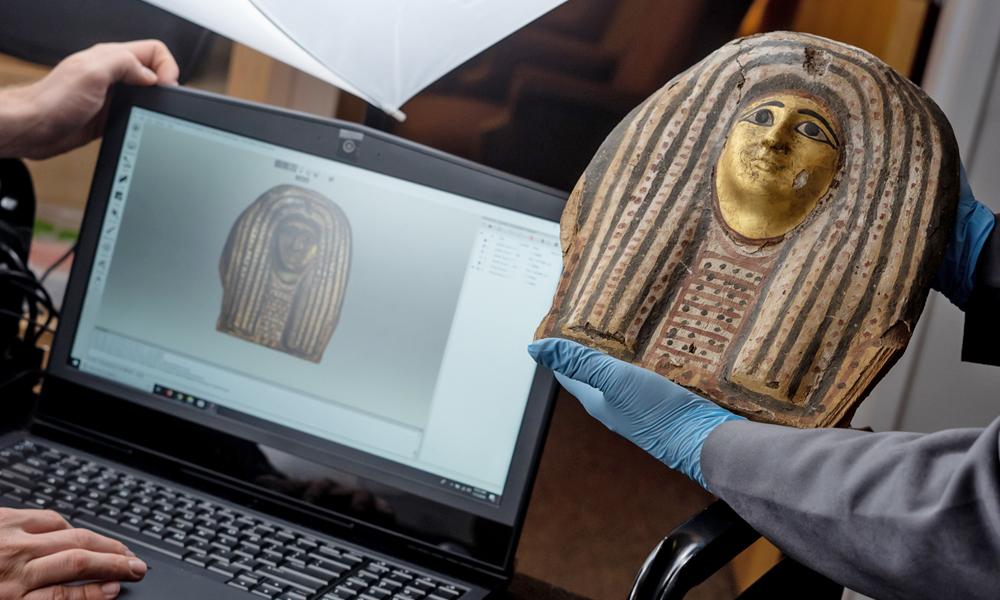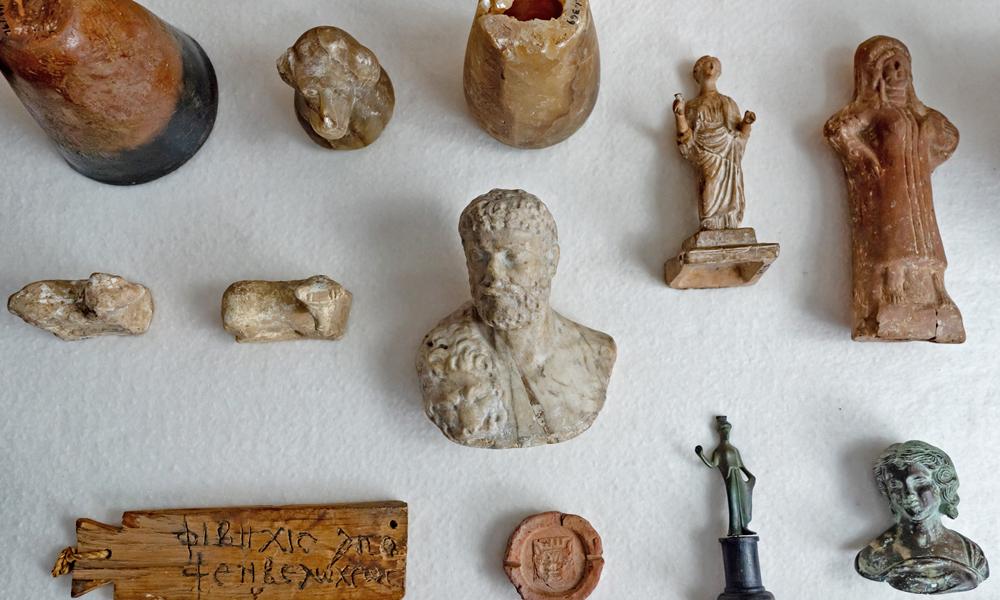Ready for their close-ups
Digitizing the Madison Art Collection
Featured StoriesSUMMARY: Hundreds of ancient artifacts from the Madison Art Collection are candidates for 3D scanning.
By Stephen Abramowitz (’19)
The Madison Art Collection is using the latest in 3D scanning technology to breathe new life into some of its ancient artifacts.
Visitors can now interact with detailed 3D renderings of these pieces—some of which date back to before the pyramids were built—like never before. The prized items are accessible online to students of all ages.
The Madison Art Collection is home to over 10,000 artifacts, including sculptures, coins, icons and other works of art that have been bequeathed to the JMU Foundation. The collection is the result of many donations over the years, according to director Wren River Stevens (’96, ’99M). “The university would never be able to assemble such a collection today,” she said.
Most of the collection’s holdings are two-dimensional objects, but about 1,000 pieces are candidates for 3D scanning.

Earlier experimentation with 3D scanning did not pan out, Stevens said, but advances in the technology, along with a partnership with Kevin Hegg, director of digital projects in the JMU Libraries, have made the work possible. Hegg became interested in museums as part of his studies in a history course taught by professor Gabrielle Lanier.
The process is similar to scanning techniques employed by the Smithsonian Institution and the British Museum. While it might seem a simple solution to maintaining fragile objects, digitization requires meticulous attention to detail and careful consideration of potential pitfalls.
“Exposure to UV light can damage the artifacts. The scanner puts out light, so we were careful to use gloves and assess whether the scanners would harm them,” said Art Pekun (‘14, ’19M), a graduate assistant who has digitized nearly 40 objects in the collection.
Through trial and error, Pekun has witnessed firsthand the advancements in 3D technology that have allowed objects to be scanned and rendered into 3D models in under two hours.
“This is a huge leap forward,” Hegg said. “We can scan really small objects, blow them up and then study them.”

Previously, the team used photogrammetry, which involves circling the object while taking pictures from different angles. Now, with two state-of-the-art scanners in the university’s possession, it can compress massive amounts of data to produce facsimiles comprised of millions of small geometric shapes.
Resembling a hairdryer, the high-tech scanners omit flashes of light that reflect off the objects. The scanners produce measurements to within a fraction of a millimeter.
Not only is the technology helping to expedite the process of digitization, but it is also opening up new educational and practical applications. Now there is opportunity for a greater number of people to study the artifacts. For those with visual impairments, having the objects unconfined behind glass display cases is a huge improvement to accessibility.
Hegg and Pekun have also leveraged scanning technology to assist JMU faculty members in Occupational Therapy and to prototype a virtual hospital examination room.
Stevens and her colleagues dedicate their time to sharing the collection’s educational potential. In addition to bringing objects into classrooms, select artifacts from the collection are curated to display in the James and Gladys Kemp Lisanby Museum, which allows for both the university and the local community to have access to these priceless relics.
With the help of JMU Libraries, Stevens aims to eventually establish a virtual museum with 3D renderings from the Madison Art Collection.
Using exotic resins, object replicas could be sold to help support the work being done. From an educational project to a large-scale endeavor, the collaboration to digitize the Madison Art Collection offers new outlets for educational experimentation.
“We hope that the project will serve as a model for other museum directors who may be considering creating 3D models of select artifacts,” Hegg said.
# # #


